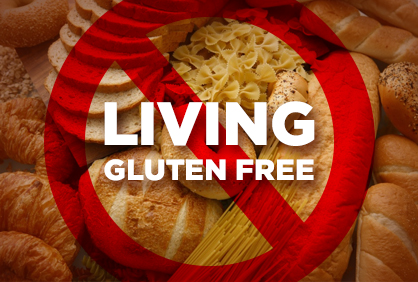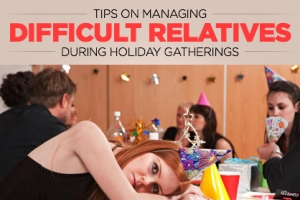The Gluten-Free Challenge
It’s everywhere: sauces, baked goods, soy sauce. And it may be a problem for you, especially if you have an allergy or celiac disease, an autoimmune disorder in which even a trace amount of gluten can cause a horrible toxic reaction in your body. So how do you survive without gluten? Eating a gluten-free diet is not easy. It takes a lot of work and preparation.
Just because “gluten-free” seems to be the new food label does not mean gluten is harmful for all.
“The fact that there are more gluten-free products available on restaurant menus and available in the supermarket makes people think that they are better for some reason,” Janice Dada, a registered dietician with SoCal Nutrition and Wellness, said. “Gluten only affects the health of those who have celiac disease … or they have some sort of gluten intolerance. For the average person, gluten is perfectly fine. “
Gluten, she says, is simply a protein found in wheat – all its forms, including durum and semolina – rye and barley.
Chef Jenny Ross, of the restaurant 118 Degrees, on the other hand, believes cutting out gluten could make a difference in your health. “For most people, a gluten-free diet is healthier, because we are really not designed to ingest as much gluten as we do every day,” she explained.
Ross believes balance is key. She says it is crucial to find other, high-protein carbohydrates to fit into your diet, such as quinoa, buckwheat and rice, a “quick go-to for people trying to switch things out.”
“The challenge really becomes when you are looking into ingredients on pre-prepared sauces and things in a grocery store because a lot of that stuff will have a filling agent that contains gluten in order to keep it shelf stable,” she declared.
So crack out that cookbook and start learning your way around a kitchen. Making your own food also offers fantastic opportunities to be healthier, as you can gravitate toward fresh foods low in sodium and additives.
The other thing that can be a challenge is eating out. “You have to know what to order and how to order it. And you have to know the questions to ask,” Ross said.
The good news is restaurants are required to know about common allergens like wheat, says Ross. According to Ross, restaurants are getting more adept at working with gluten allergies, with new gluten-free options.
In some senses, gluten-free is easy: You really don’t need gluten to cook.
For sauces, she recommends checking out vegetable purees and fresh herb blends.
“Basically, you do the same process that you do in regular baking. But in order to have it stick together you have to use an emulsifying agent,” Ross said. She suggests Irish moss (a seaweed gel), psyllium husk or flaxseed, or, for a way to keep products shelf stable, use lemon juice or olive oil.
One of Chef Nathan Coulon’s favorite substitutes is tapioca. Gluten acts to hold things together, he says. When you eliminate gluten from your recipes, you need something else as a binder, like tapioca. For example, True Food Kitchen, his workplace, makes a gluten-free pizza, with dough made from tapioca, rice flour and eggs as replacements for gluten and wheat.

Coulon reports that texture is often a challenge in gluten-free cooking.
“You are not going to get the same textures as with flour,” Coulon said. “With the pizza crust, for example, it is not going to be as stretchy and chewy. The gluten molecules give you that elasticity. Same with pasta.”
Some easy ways around it make sense; for instance, True Food’s flourless chocolate cake: Just eliminate the flour from the traditional recipe.
“Typically, when people say they want to be gluten-free, they still want to eat those things that are similar to what people would have if they could eat gluten,” Coulon said. That adds up to a lot of substitution, such as gluten-free pasta made with brown rice. Coulon recommends a wheat-free tamari for flavor, say in a stir fry with rice.
The chef believes you have a decision to make: “Do you want to have a gluten-free diet and still eat things similar to things made with flour? … A lot of times, people still want to eat something similar to pizza crust, so they are looking to replace it with something. On the other hand, you could just not have foods that are flour-based.”
If you go the gluten-free route, you will likely end up making a great deal of your food at home. If you do go out to eat, ask the right questions. For example, True Food Kitchen minimizes risk of contamination by keeping everything separate: separate sauces, separate utensils, separate ovens, separate plates.
These days, all you need to do to find a range of gluten-free products is to head for your nearest health food store. Be warned: No gluten in the ingredients does not mean gluten-free; if equipment is shared with products that contain gluten, there will be trace amounts of gluten. A bag of frozen greens beans could be processed on equipment used with wheat ingredients.
Michelle*, who suffers from celiac disease, recommends learning everything you can about what to avoid and what products could have secret gluten ingredients.
Even a part per million of a gluten-containing food, says Dada, can be problematic for somebody with celiac disease.
The hardest part, Michelle says – after eating out—is variety. She reports it is hard if you don’t cook or don’t have time to cook.
So abandon those gluten-containing sauces and flavorings. Michelle relies on herbs and spices all the time, such as fresh cilantro, red pepper flakes, roasted chilies and dried herbs.
Her ultimate piece of advice: “Learn to cook from scratch.” A good cookbook is a must.
May is Celiac Awareness Month. For more information, visit www.celiac.org.
Tagged in: gluten, 118 degrees, celiac disease, celiac, celiac awareness month, true food kitchen, gluten-free,

LadyLUX
Tagged in: gluten, 118 degrees, celiac disease, celiac, celiac awareness month, true food kitchen, gluten-free,



